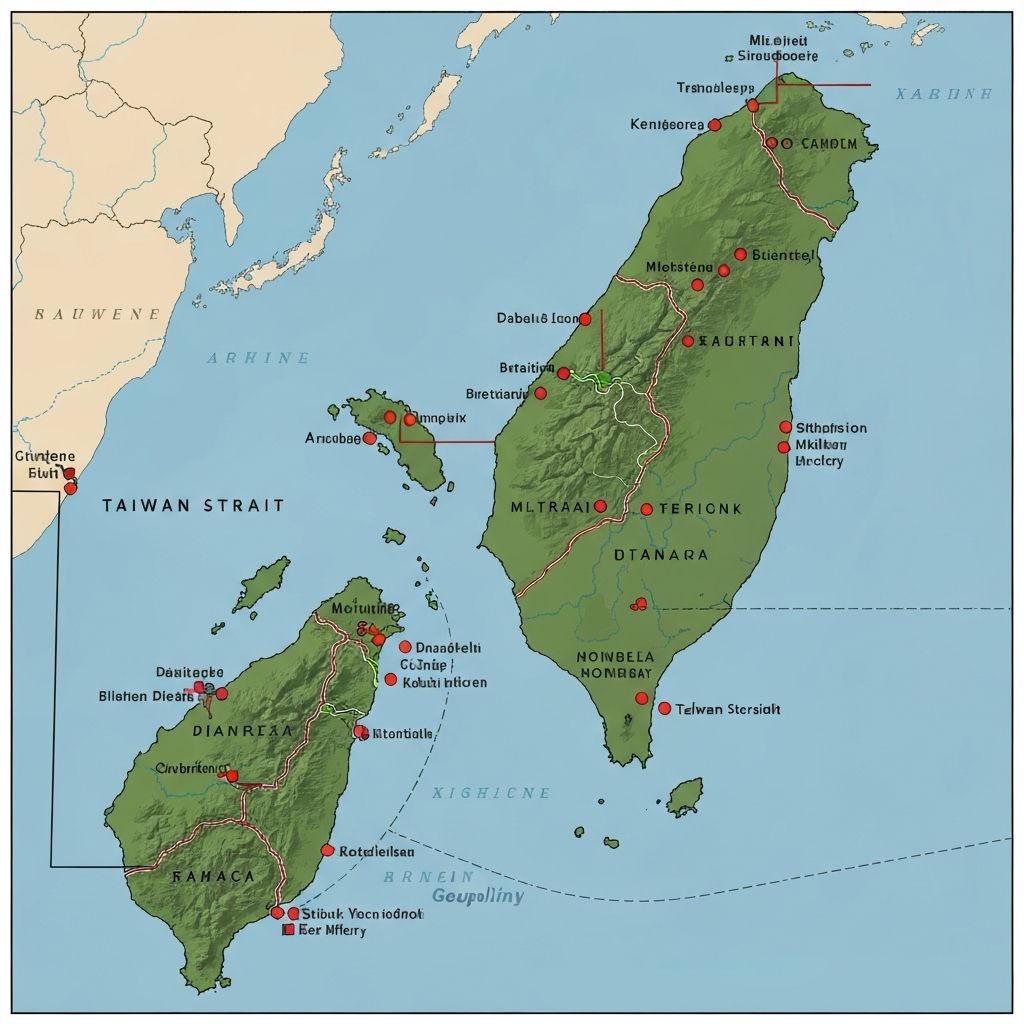
Taiwan Strait Tensions 2025: Market Assessment
Current Geopolitical Landscape
Prediction markets currently assign a 21% probability to a major military escalation in the Taiwan Strait within 2025-2026, down from 24% in late 2024. This decline reflects diplomatic progress in back-channel communications following the new U.S. administration's Asia policy statements, though the situation remains highly uncertain.
Strategic Considerations
Military analysts identify several factors that constrain immediate escalation risk in 2025:
- Economic Interdependence: China's economy remains deeply integrated with global supply chains, creating substantial costs to military action that would trigger sanctions and economic disruption
- Military Preparedness: Despite continued modernization, Chinese military capabilities for amphibious assault operations remain inadequate for a high-probability success scenario in the near term
- International Response: The certainty of U.S. and allied intervention creates significant deterrence against aggressive action during 2025
Recent Developments
Early 2025 has witnessed both concerning and reassuring signals. Military exercises near Taiwan continued, with Chinese forces conducting drills that simulated blockade operations. These activities maintain pressure on Taiwanese defenses and signal resolve.
However, economic data reveals continued robust trade between Taiwan and mainland China, suggesting that economic pragmatism continues to temper political tensions. The mutual economic stakes provide strong incentives for stability throughout 2025.
Market Dynamics Analysis
The 3-point decline in escalation probability reflects several specific developments entering 2025:
- Successful high-level dialogue between U.S. and Chinese defense officials in late 2024 reduced immediate miscommunication risks
- Taiwan's new leadership has adopted measured rhetoric that reduces provocative cross-strait tensions
- Economic growth concerns in China shift policy focus toward domestic stability rather than external adventures in 2025
Long-Term Risk Assessment
While near-term escalation probability declined marginally, structural tensions remain unresolved. China's stated commitment to "reunification" creates persistent pressure, while Taiwan's growing distinct identity reduces prospects for political resolution.
The 18-month horizon captured in prediction markets may underweight tail risks associated with political transitions, economic shocks, or miscalculation during military exercises. These low-probability but high-impact scenarios warrant consideration in comprehensive risk assessments.
Investment Implications
For global markets in 2025, Taiwan Strait tensions represent a significant risk premium in semiconductor stocks, given Taiwan's dominance in advanced chip manufacturing. However, the gradual decline in escalation probability may support multiple expansion in affected sectors throughout the year.
Prediction market participants should monitor several key indicators during 2025: military readiness assessments, economic policy shifts in Beijing, U.S. arms sales to Taiwan, and the frequency and proximity of Chinese military exercises. Material changes in these variables would likely trigger significant repricing of escalation probabilities.